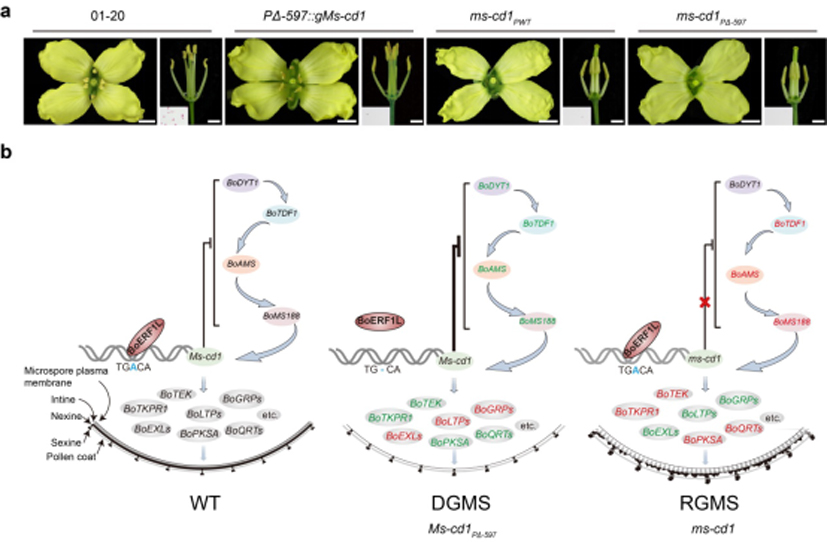Recently, researchers from Institute of Vegetables and Flowers (IVF) of Chinese Academy of Agricultural Sciences (CAAS), in collaboration with Agricultural Genomics Institute at Shenzhen, Chinese Academy of Agricultural Sciences etc. reported their research results in a paper entitled “A natural mutation in the promoter of Ms-cd1 causes dominant male sterility in Brassica oleracea” published in the journal Nature Communications.
Hybrid seed production in B. oleracea vegetables depends on male sterility. The most widely used Ogura cytoplasmic male sterility (CMS) suffer from several intrinsic problems including floral bud abnormalities, reduced flower size, low hybrid seed quality and yield, low genetic diversity, and changes in important quality traits. The dominant male-sterile mutant of B.oleracea 79-399-3 (whose causal locus was named Ms-cd1), was identified from a spring cabbage population by Professor Zhiyuan Fang. Based on this DGMS, a special commercial seed production system has been developed and successfully utilized in cole crop plants. Hybrid seed yields using this DGMS system increases by more than 98% compared with those of hybrids developed via the traditional CMS-based method
Researchers now clone the dominant male-sterile gene Ms-cd1 and reveal that it encodes a PHD-finger motif transcription factor. A natural allele Ms-cd1PΔ−597, resulting from a 1-bp deletion in the promoter, confers dominant genic male sterility (DGMS), whereas loss-of-function ms-cd1 mutant shows recessive male sterility. They show that BoERF1L represses the expression of Ms-cd1 by directly binding to its promoter; however, the 1-bp deletion in Ms-cd1PΔ−597 abolishes the binding. These combined results suggest a molecular mechanism through which BoERF1L plays an important role in the precise regulation of Ms-cd1 and the maintenance of male fertility. The cloned Ms-cd1 gene and its associated DGMS system can help to improve the breeding of hybrid cultivars.

Figure 1. BoERF1L-Ms-cd1 mediated dominant male sterility in B. oleracea
The research was supported by the National Natural Science Foundation of China, the Science and Technology Innovation Program of the Chinese Academy of Agricultural Sciences and China Agriculture Research System of MOF and MARA.
More information can be found through the link: https://www.nature.com/articles/s41467-023-41916-0